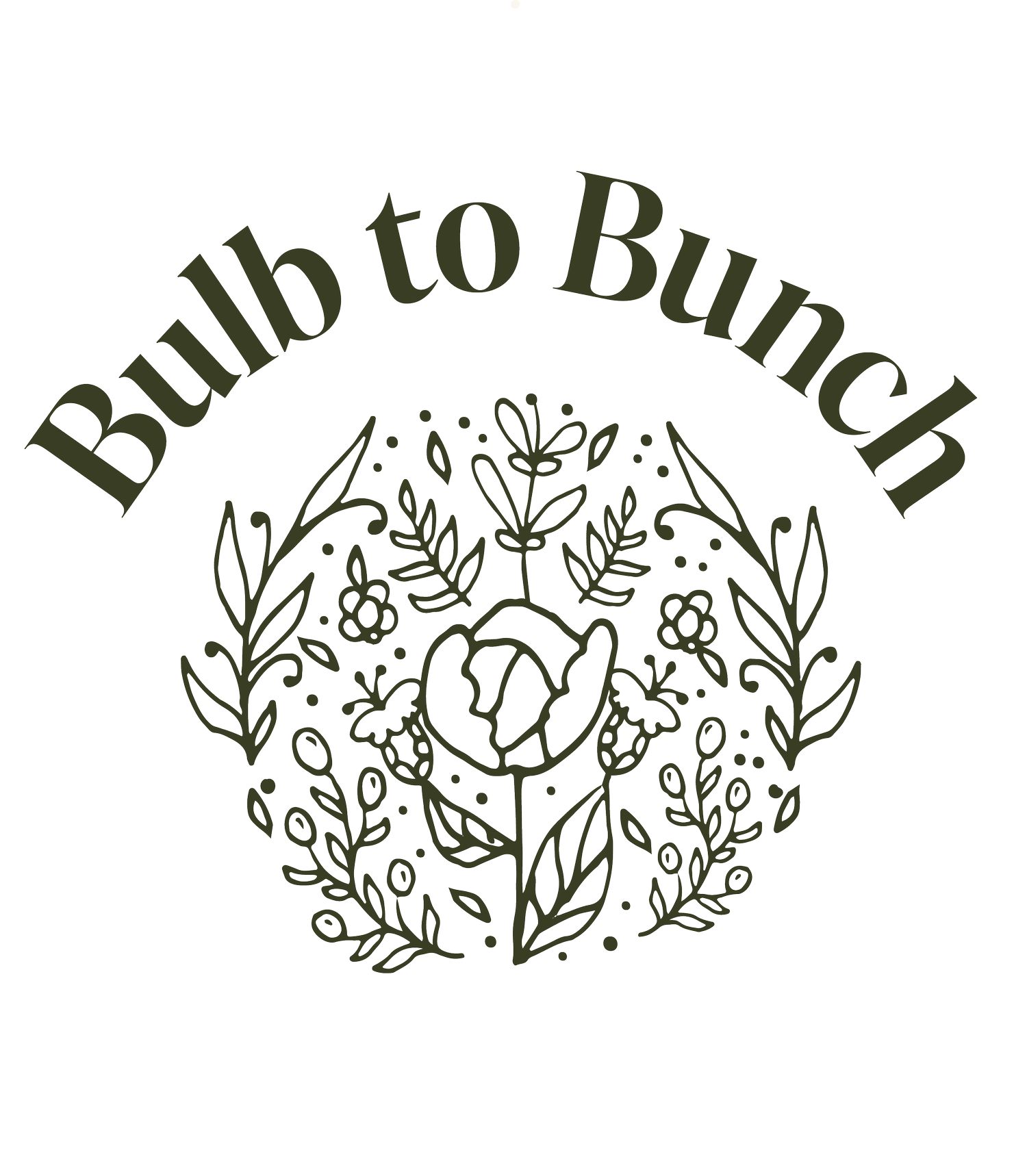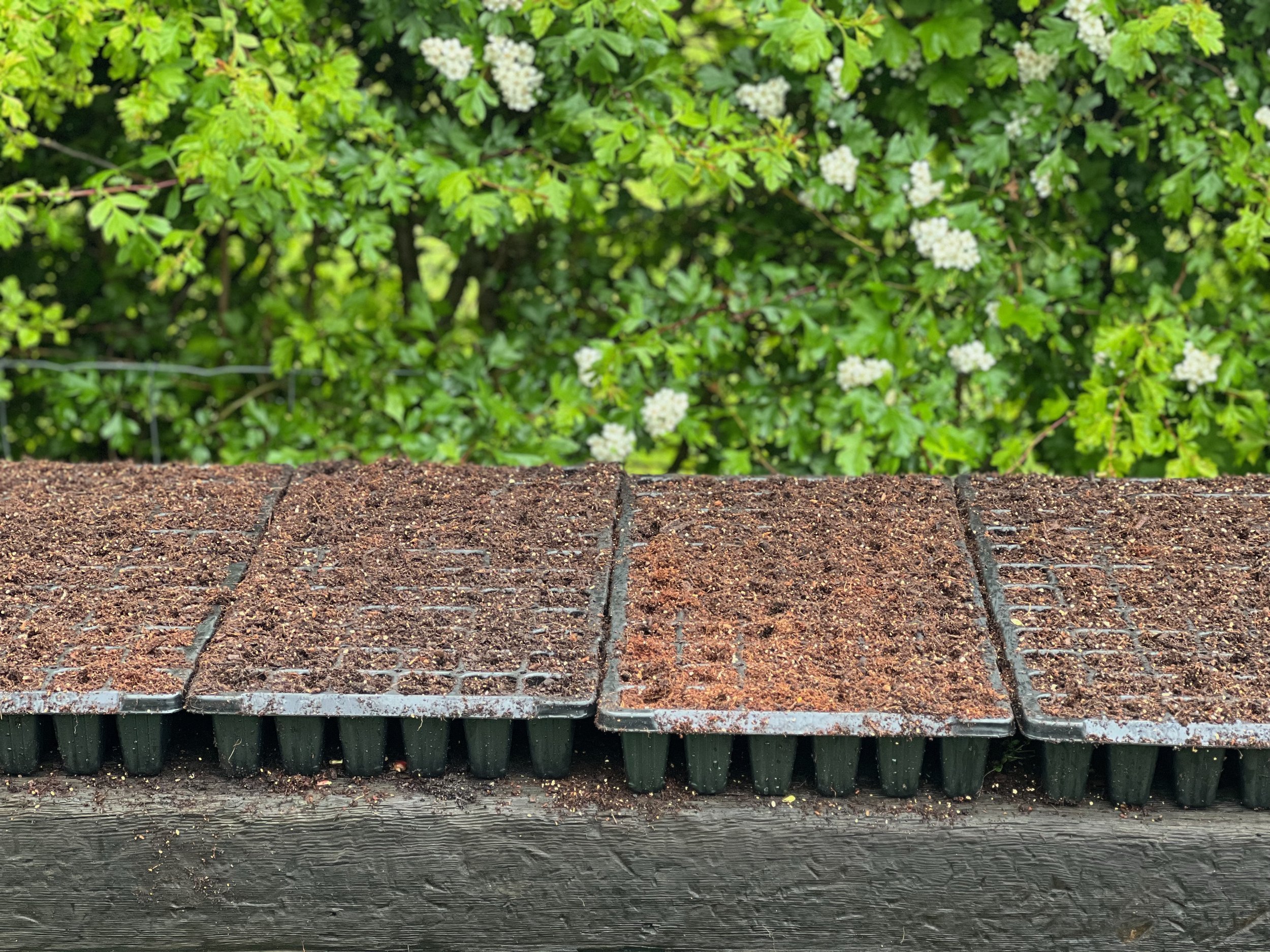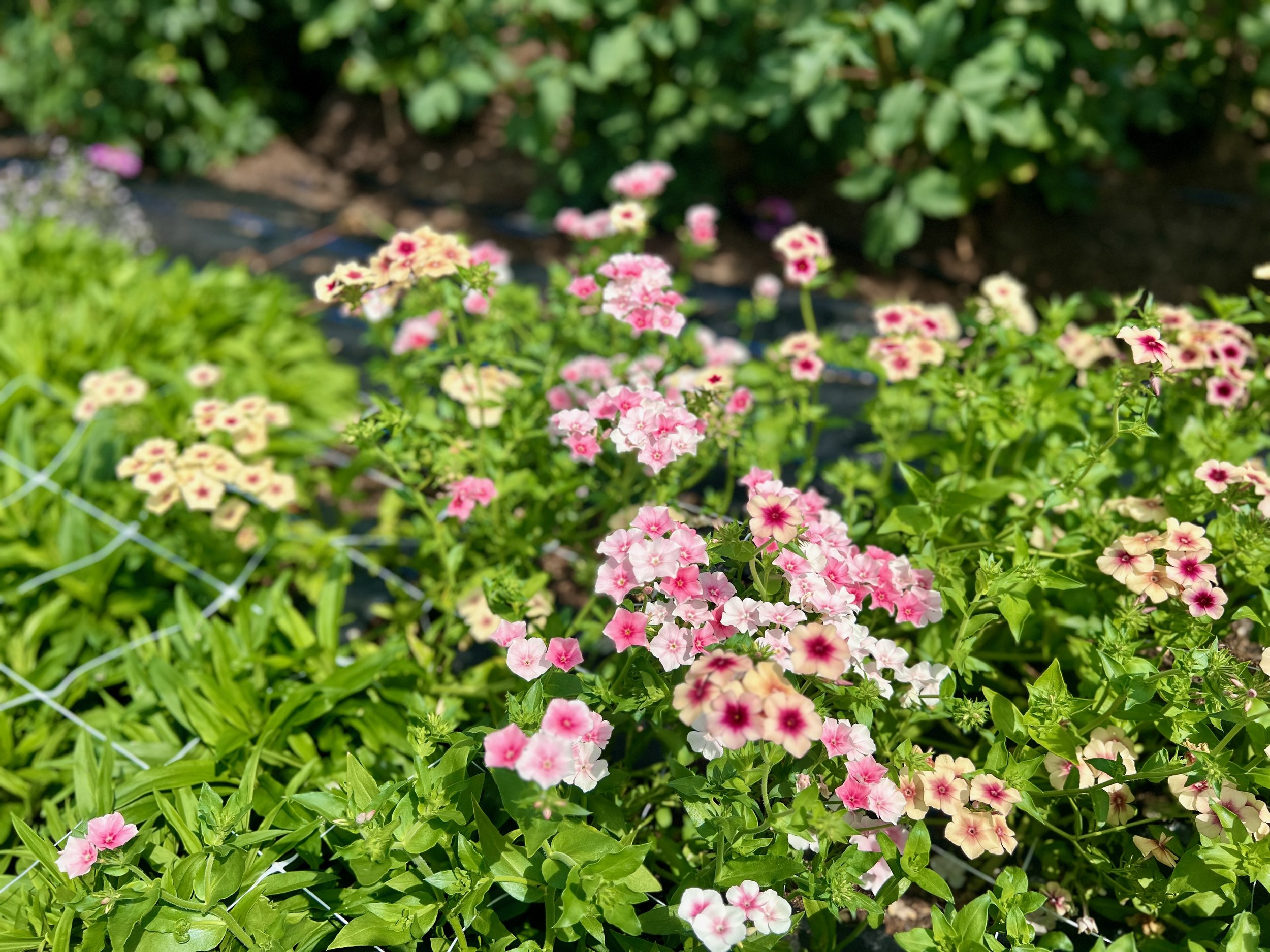Grow your own cut flower garden
Who doesn’t love a beautiful bouquet of flowers? Well, the good news is: growing your own cutting garden is easier than you think, and you don’t even have to start until March. Here’s all you need to know.
A few things to note before we get to the flowers.
Easy to grow seeds and bulbs
There are some seeds that are super reliable and always sprout. Others can be a bit temperamental. To ensure you succeed from the get go, I’m only recommending seeds and plants that are really, really easy to grow.
Sylvagrow compost only
Compost makes all the difference. Most of the failures I’ve had are with poor growing medium. To be kind to the environment, it’s important to use peat-free, but most peat-free composts are, to be frank, utterly useless - even the big brand ones. I only use Sylvagrow multi-purpose 100% peat-free compost now. It’s a little more expensive, but well worth the extra money. That said, do shop around, some crafty retailers are selling the 40L bags for £16.00 or more, others, as low as £5.00.
A 10m2 space
Space wise, you probably need a patch of ground that totals about 10m2. This might be in one 2m x 5m rectangle, or in multiple patches of your garden beds. It matters not a jot. Do stick to the recommended spacing though. You won’t believe how big some plants grow. And, if you crowd them, they won’t get enough room, light or nutrients to grow well.
You can sow more than the recommended number for the space, then thin out the seedlings if they all grow. But I’ve chosen seeds with good germination rates, so you may end up growing too many for the space, or wasting plants. Up to you.
Just 10 varieties
You don’t need to grow loads of flower varieties. You just need a mix of focal flowers, fillers and foliage, textures and shapes, some spikes, some umbels, and some daisy-like. With just the 10 flower and foliage varieties I’ve listed here, you‘ll get a lovely variety of bouquets.
If you want to grow more
If you want to grow more, my top suggestions would include:
Bee balm (Monarda)
Corncockle (Agrostemma)
Greek Oregano
Gypsophila
Hesperis Sweet Rocket
Larkspur
Love-in-a-mist (Nigella)
Raspberry greens
Scabiosa
Snapdragons (Antirrhinum)
Strawflowers (Helichrysum)
Stocks
Sweet peas
No successions
Experienced growers aim to have flowers from spring through to autumn by planting in successions. Simplistically, this might mean sowing in a third of the space in, say, March, a third of the space in April, a third of the space in May, and once all of March’s flowers have been harvested, maybe clearing and sowing into the space they were in in June. We’re not worrying about this today.
Buying seeds
You obviously buy seeds in packets with the seller deciding how many seeds go into each. For a small flower patch, one packet will be more than enough, probably for several years.
I get most of my seeds from Chiltern Seeds. They have good growing instructions, albeit no photo, on the seed packet, and germination rates are among the best. Plants of Distinction are also very good.
If you ever do buy in bulk take a look at Moles Seeds – they’re generally cheaper. And for sunflowers, Just Seed.
It’s also good to support small seed sellers like Zoe Woodward and The Hampshire Seed Company and for herbs, Hillside Herbs.
For dahlia tubers, I variously use Peter Nyssen, J Parker’s, and Halls of Heddon.
Direct sow or sow into pots first
I always sow into plug trays, pots or soil blocks, rather than direct into the beds where the plants will grow. I like to see whether something germinates first – and if it doesn’t, I can try again. I also don’t need to worry about mistaking my plant for a weed as it’s growing.
If you have a greenhouse, polytunnel or cold frame, you can give your seeds a head start in there. If not, the clear, plastic crates you can buy pretty cheaply, also work really well.
Know your plant types
It’s helpful to know a little about seeds. Most of my non-compost related failures come from ignoring the growing instructions.
For buying purposes, flowers and foliage simplistically fall into six categories:
Hardy annuals: The clue’s in the name. These are the seeds that you can sow in the autumn knowing, especially if you keep your seedlings under cover, they’re hardy enough to get through the winter and flower the following year. Or you can plant these indoors under lights in January and February, or sow direct outside from the end of March when it still gets pretty cold. On the assumption you’re new to growing, I’m going to assume no greenhouse, polytunnel, grow lights or heat mats, and recommend sowing all these seeds direct at the end of March.
Half-hardy annuals: These are the more delicate seeds that need warmth and light to grow well, so you can’t sow them outside before around the end of April, and the last frost of the year.
Both annuals and half-hardy annuals flower in their first year, then die.
Biennials: These are the seeds you sow one year to flower the next. Because it’s January, and too late to sow these for flowers this year, I’m not recommending any.
Perennials: These are the plants that come back year after year. You can sow many perennials from seed, but you’re often better buying them as plants, to get results a little faster.
Annoyingly even the plant experts can’t always agree what classification plants fall into.
Then there are bulbs and corms. Again, these generally come back year after year, but you may need to lift and store them in the winter in case they rot.
Finally, bare roots. These are dormant plants sold without soil around their roots, usually available to buy from November to March.
Sow around the end of March
If you’re new to growing, with no greenhouse, polytunnel, grow lights or heat mats, it’s best not to start sowing any seeds until the end of March.
Yarrow (Achillea)
Classification: Perennial, although some people grow as a hardy annual.
Flower type: A filler flower with clusters of tiny flowers on long stalks in various shades, some pastels, some bright, and white.
Sowing: Sow onto surface of moist soil, raked to a fine tilth. Don’t cover with soil as they need light to germinate. For a 1m2 space, sow 20 seeds.
Spacing and sowing: Space about 22cm.
Harvest: When three-quarters of the florets are open. Chop off any floppy side stems. Cut back after it first flowers and you might get another flush.
Vase life: Long vase life of 7-14 days. Also good for drying.
Recommended varieties: I love Colorado with muted red, mauve, pink, apricot and yellow.
Statice (Limonium)
Classification: Some are half hardy annuals, some are perennials.
Flower type: A filler flower with clusters of papery, frilly flowers on long stalks in various shades, some pastels, some bright, and white.
Sowing: Sow onto surface of moist soil, cover with light sprinkling of compost. For a 1m2 space, sow 20 seeds.
Spacing and sowing: Space about 22cm apart.
Harvest: Harvest when half to three-quarters of the flowers on the stem are open. Cut back after it first flowers and you might get another flush.
Vase life: Long vase life of 7-14 days. Also good for drying.
Recommended varieties: The mixed pastels is great. The white can go brown very quickly and the peach always looks a bit faded to me.
Mint
Classification: Perennial herb.
Flower type: Fast growing and prolific foliage that gives bouquets a lovely fresh scent. Many people worry about mint spreading, but as I’m always cutting it, I haven’t found this an issue.
Sowing: OK, I lied, mint can be tricky to germinate so buy as a small plant. They’re not expensive.
Spacing: Space about 30cm apart. For a 1m2 space, you’ll fit 4-12 plants.
Harvest: As soon as stems are long enough.
Vase life: Long vase life of 7-14 days.
Recommended varieties: I love Apple Mint that seems to grow fastest and tallest. Pineapple mint is a beautiful variegated variety, but can be too short, or floppy when longer.
Persian Cress
Classification: Hardy annual.
Flower type: I count this as foliage and it’s prolific.
Sowing: Sow onto surface of moist soil, raked to a fine tilth. Cover lightly with compost. For a 1m2 space sow 36 seeds.
Spacing: Space 15cm apart. Tie them to a bamboo stake as they grow.
Harvest: When most of the stems have developed seedpods. Also good for drying.
Vase life: Medium vase life of 7-10 days.
Recommended varieties: Lepidium Sativum.
Sow around end April
It’s the turn of the half hardy annuals around the end of April.
Pro Cut Sunflowers
Classification: Half hardy annual.
Flower type: A focal with large flowers on a single stalk, pro-cut are pollenless so flowers won’t shed on your table top.
Sowing: Sow 15mm deep. For a 1m2 space sow 36 seeds.
Spacing: Space 15cm apart to stop them getting too tall. Tie them to a bamboo stake as they grow.
Harvest: When you can see come colour and they’re just opening.
Vase life: Long vase life of 7-14 days.
Recommended varieties: Rather than the traditional garish yellow, opt for softer pale yellow or peach shades like Pro-Cut White Lite or Pro-Cut Peach.
Zinnias
Classification: Half hardy annual.
Flower type: A focal flower if you go for the larger Benary’s Giant. Available in loads of colours from brights to pastels, and different shapes and sizes.
Sowing: Sow seeds 6mm deep onto moist soil. For a 1m2 space, sow 20 seeds.
Spacing: Space about 22cm apart. Slugs love these, especially when they’re small shoots, so you may need to use organic Sluggo pellets. When they get about 30cm tall, pinch the tops out so you get more flower stems. Tie to a bamboo stake as they grow.
Harvest: Harvest when the stems are stiff, not wobbly.
Vase life: Long vase life of 7-14 days.
Recommended varieties: I love the more muted salmon, cream and lime varieties like Benary’s Giant White, Benary’s Giant Lime and Benary’s Giant Salmon Rose.
Cosmos
Classification: Half hardy annual.
Flower type: A filler that brings a lovely airy feel to bouquets.
Sowing: Sow onto moist soil, raked to a fine tilth and over with sprinkling of soil/compost. For a 1m2 space, sow 4-12 seeds.
Spacing: Space about 30cm apart. When they get about 30cm tall, pinch the tops out so you get more flower stems. Tie to a bamboo stake.
Harvest: Harvest just as buds are about to open.
Vase life: 5-7 days. You also need to stay on top of dead heading.
Recommended varieties: I love Purity which is white, has bigger flowers and goes with pretty much everything.
Phlox drummondii
Classification: Half hardy annual.
Flower type: Another lovely filler with clusters of flat-faced flowers.
Sowing: This one is also tricky as it will only germinate in the dark. Sow 1.5cm deep covered with soil, or just buy as seedlings or 9cm pots. For a 1m2 space, sow 20 seeds.
Spacing: Space about 22cm apart.
Harvest: When there are buds on the stems still to open.
Vase life: Long vase life of 7-10 days.
Recommended varieties: Crème brulee or Cherry Caramel because they go with loads of things.
Feverfew (Tanacetum / Matricaria)
Classification: Perennial although some people grow it as a hardy annual.
Flower type: A filler with lots of tiny daisy-like flower clusters.
Sowing: Sow onto moist soil, raked to a fine tilth. Pinch out the growing tip to create a bushier plant. For a 1m2 space, sow 20 seeds.
Spacing: Space about 22cm apart.
Harvest: When flowers are fully open.
Vase life: Medium vase life of 7-10 days.
Recommended varieties: I like Tanacetum Snowball. Avoid tetra white; it looks nice in the pictures, but the flowers are actually more a dirty grey.
Plant at end of May
Dahlias go in last, once there’s no chance of further frosts. Don’t worry, they get big very quickly.
Dahlias
Classification: Perennial. You’ll need to dig these up after the first frost, or mulch heavily to see them through a harsh winter.
Flower type: Just a truly magnificent focal flower. Looks lovely with other flowers, but almost better alone.
Sowing: Buy as tubers. For the space, you’ll only have room for two. Dig hole for and bury tuber so just the stem is visible. Give a light water and, until established, only water if very dry. When they have four to five pairs of leaves, pinch out their growing tips to create more flower stems. You’ll need to dig these up again after the first frost, or mulch heavily to see them through a harsh winter.
Spacing: Space 40-50cm apart.
Harvest: When just fully open – they won’t open further in the vase.
Vase life: Short vase life of 3-7 days. Pom pom, ball, decorative and waterlily last longer than the dinner plate varieties.
Recommended varieties: White Onesta (White), Wine Eyed Jill (Cream, peach or yellow with a dark red centre) and Sandra (bright pink). All prolific flowerers.
Bulb to Bunch | Beautiful, locally-grown flowers and foliage, available as bouquets, in buckets and wholesale, plus gifts and more
www.bulbtobunch.com



















